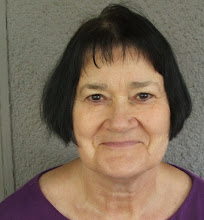Today I was editing a chapter in a non-fiction book on aging. The chapter, on family communication, included a lot of reported (also called indirect) speech. "The wife reported that she...., but the husband disagreed and said..." For an occasioanl sentence, this works okay but this paragraph reported a whole conversation between this couple and their adult children. I suggested to the author that she create a small scene and use actual dialog, even though she might have to recreate it.
In nonfiction, dialog can help the examples feel more like a story, feel more alive and realistic. And an author can use them to the same good effect that fiction writers do.
But be wary of dialog that is used for its own sake or just to break up the page. Dialog should be used for two things: to convey information through an individual's voice (case study, fictional character) and to acquire information (fictional character as tool of author or nonfiction author asking questions of her reader).
Readers love scenes. We are all so habituated by tv and the movies that we get most of our information that way. Use them to your advantage.
Tuesday, August 24, 2010
Sunday, August 22, 2010
Three things to watch for in fiction
In his excellent book Dare to Be a Great Writer, Leonard Bishop lists three things that plague the writing of amateurs and which they are reluctant to let go of when they begin rewriting:
1. Dialog that tells content that should be delivered in a scene.
2. Scenes that are overlong and that belabor the point they deliver.
3. Overlong introspections that include polemics.
I'd add a fourth: long passages of indirect speech that should be dialog.
While some exceptionally skilled writers (Wendell Berry comes to mind) can handle long passages that don't include a specific scene of action, most less experienced writers cannot do that without bogging the reader down.
Case in point: I've been reading a manuscript written in first person. The narrator has much to say. Too much. He explains everything overmuch, he philosophizes over much. I'm on page 80 and I don't yet know what the story is about. The author is a good writer in that sentences are well put together, his images are often clever, and his vocabulary impressive. But none of that works without more scenes, more action, more interaction. The overlong introspections and arguments are weighing this reader down.
Whenever possible, create more scenes where more happens. Where the characters' dilemmas are evidenced, where characterizations are revealed (motives, in particular), where people show their feelings, their values, their vices.
1. Dialog that tells content that should be delivered in a scene.
2. Scenes that are overlong and that belabor the point they deliver.
3. Overlong introspections that include polemics.
I'd add a fourth: long passages of indirect speech that should be dialog.
While some exceptionally skilled writers (Wendell Berry comes to mind) can handle long passages that don't include a specific scene of action, most less experienced writers cannot do that without bogging the reader down.
Case in point: I've been reading a manuscript written in first person. The narrator has much to say. Too much. He explains everything overmuch, he philosophizes over much. I'm on page 80 and I don't yet know what the story is about. The author is a good writer in that sentences are well put together, his images are often clever, and his vocabulary impressive. But none of that works without more scenes, more action, more interaction. The overlong introspections and arguments are weighing this reader down.
Whenever possible, create more scenes where more happens. Where the characters' dilemmas are evidenced, where characterizations are revealed (motives, in particular), where people show their feelings, their values, their vices.
Subscribe to:
Comments (Atom)

